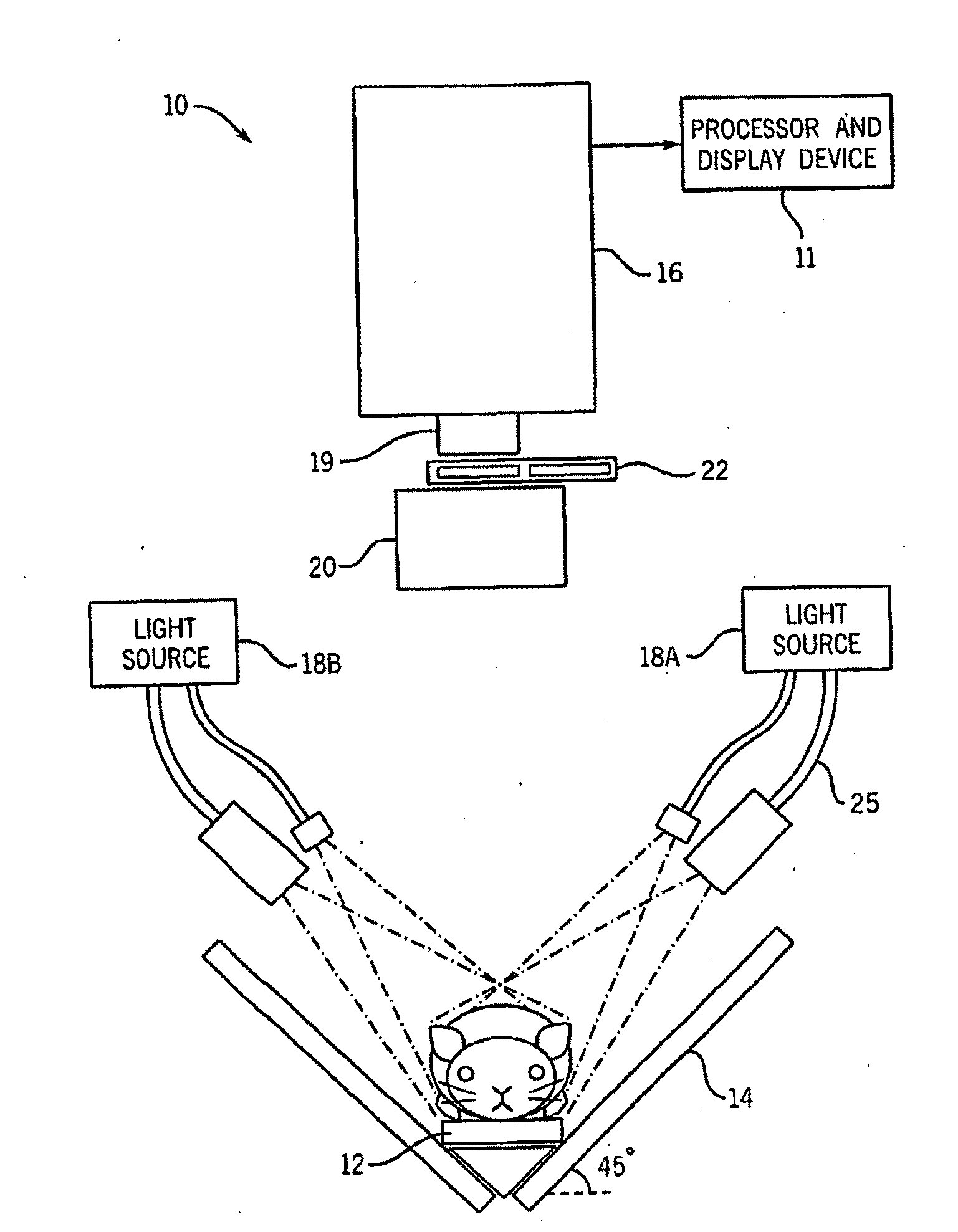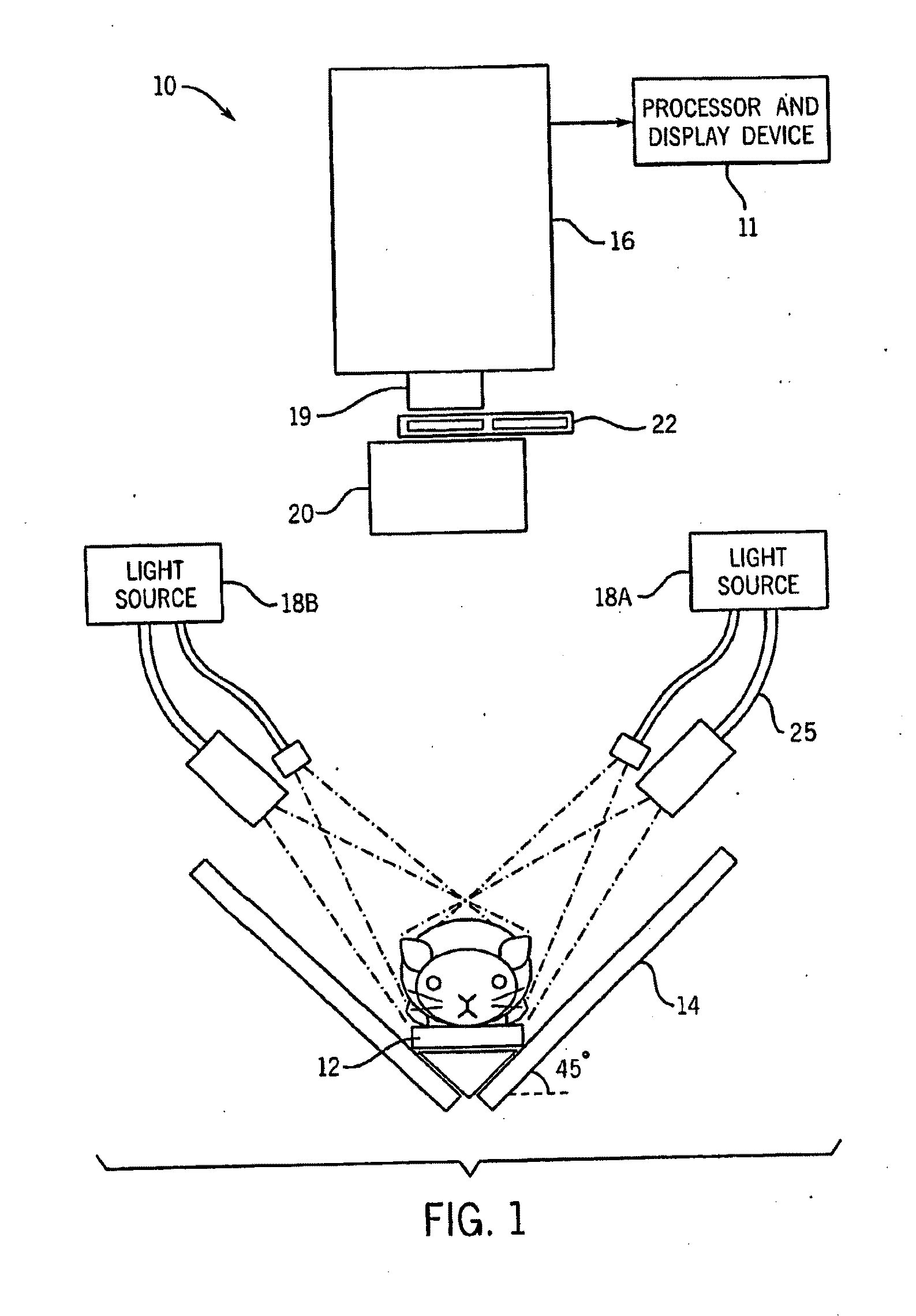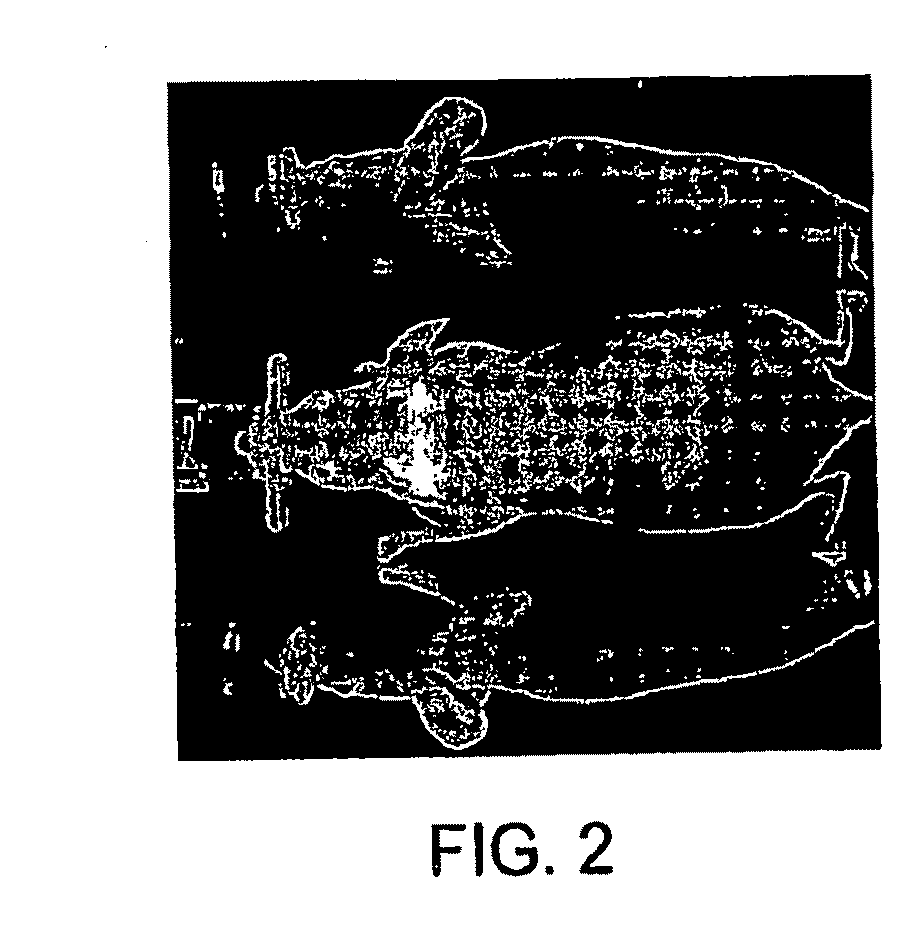In-vivo optical imaging method including analysis of dynamic images
a dynamic image and optical imaging technology, applied in the field of optical molecular imaging methods for imaging animals, can solve the problems of difficult identification of signals by host organs, difficult localization, quantification, and many challenges of in-vivo optical molecular imaging, and achieve the effect of improving the generated image of a targeted region
- Summary
- Abstract
- Description
- Claims
- Application Information
AI Technical Summary
Benefits of technology
Problems solved by technology
Method used
Image
Examples
Embodiment Construction
[0032]FIG. 1 illustrates one embodiment of a fluorescent dynamic optical imaging system 10 for imaging small animals such as mice. The imaging system 10 includes an optical detector 16 which is operable to acquire various images of the mouse. The imaging system 10 also includes a processor and display device 11 which is operable to generate and display other images of the mouse. These generated images can include an image of a targeted region, an anatomical image map which includes anatomical structures of the mouse, or a combined image of an anatomical image map and a targeted region, which shows a targeted region localized with respect to the anatomical structures. Both the acquired and generated images can be displayed on the display device 11.
[0033]Briefly, at least one optical contrast substance in the mouse is imaged with the imaging system 10 to acquire a time series of image data sets which are analyzed using the dynamics of the optical contrast substance to identify various...
PUM
 Login to View More
Login to View More Abstract
Description
Claims
Application Information
 Login to View More
Login to View More - R&D
- Intellectual Property
- Life Sciences
- Materials
- Tech Scout
- Unparalleled Data Quality
- Higher Quality Content
- 60% Fewer Hallucinations
Browse by: Latest US Patents, China's latest patents, Technical Efficacy Thesaurus, Application Domain, Technology Topic, Popular Technical Reports.
© 2025 PatSnap. All rights reserved.Legal|Privacy policy|Modern Slavery Act Transparency Statement|Sitemap|About US| Contact US: help@patsnap.com



